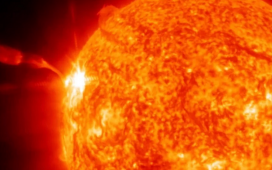Astronomers are closely monitoring Asteroid 2024 YR4 amid concerns that it could collide with the Moon in 2032. While the asteroid is no longer considered a significant threat to Earth, new calculations suggest a small but notable chance of a lunar impact, according to observations from the James Webb Space Telescope (JWST).
Discovered in December 2024, 2024 YR4 measures approximately 55 metres in diameter and is travelling at speeds of nearly 48,000 km/h. Initial projections indicated a possible Earth impact, but updated data from NASA‘s Jet Propulsion Laboratory (JPL) has ruled out that scenario. Instead, scientists are now focusing on its potential trajectory toward the Moon. According to Live Science, astronomers estimate a 1.7% probability that the asteroid will strike the lunar surface on December 22, 2032.
Such a collision could result in a crater up to two kilometres wide, making it one of the most significant lunar impacts recorded in modern history.
David Rankin, an operations engineer with the University of Arizona’s Catalina Sky Survey, stated: “It would likely be very visible from Earth.”
The Moon’s lack of atmosphere means an impact from an object of this size would be far more dramatic than a similar collision on Earth.
Without atmospheric resistance to slow it down, 2024 YR4 would strike the surface at full velocity, ejecting debris into space.
Some of this debris could drift toward Earth, but Gareth Collins, a professor of planetary science at Imperial College London, assured that “any such material would likely burn up upon entering Earth’s atmosphere, posing minimal risk.”
The JWST has played a crucial role in refining 2024 YR4’s trajectory estimates.
By analysing infrared emissions, astronomers have determined the asteroid’s size, rotation and composition with greater accuracy.
These observations are becoming increasingly critical as the asteroid moves farther from Earth, making it harder to track using conventional ground-based telescopes.
Further observations are expected to improve predictions in the coming years. Experts emphasise that while the probability of a Moon impact remains low, it underscores the importance of continued vigilance in tracking near-Earth objects.
In the event of a collision, scientists say it would be a rare opportunity to study an asteroid impact in real-time.
The Moon’s surface records impacts over billions of years, but direct observations of fresh craters are rare.
Such an event would provide valuable insight into planetary defence strategies and the potential effects of future asteroid impacts, whether on the Moon or elsewhere in the solar system.










